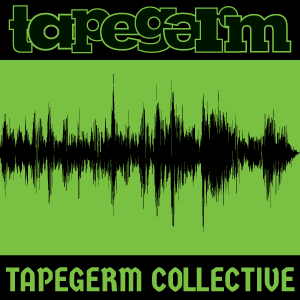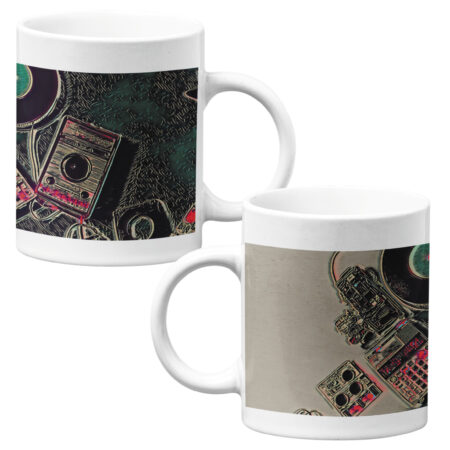Your cart is currently empty!

Getting Started With Online Music Collaboration
As a musician, you know the importance of collaboration. Whether it’s with other musicians in your band, or with producers and engineers, collaborating with others is what helps you create great music.
But what if you don’t live near any other musicians? Or what if you want to collaborate with someone who lives in a different country? How do you go about that?
In this blog post, we’ll discuss some tips for online music collaboration, covering the following:
- Finding Collaborators
- Establishing Rules and Expectations
- Sharing Files Online
- How Will You Communication? chat, video conferencing, email, text messaging, etc.
- Composition Software Options

Finding Collaborators
The internet has made it easier than ever to connect with other musicians from around the world. If you’re looking for online music collaborators, there are a few great places to start.
Online Music Communities
One option is to join an online music community such as SoundCloud or Bandcamp. Here, you can share your music, give and receive feedback, and connect with other artists. Another option is to use a site like Reedsy, which helps connect authors and illustrators with freelance editors, designers, and marketers. Finally, social media sites like Twitter and Facebook are also great places to find potential collaborators. By using hashtags or joining relevant groups, you can easily connect with other musicians who share your interests. With a little effort, you’ll be able to find online music collaborators who are a perfect fit for your project.

Online Forums
Another place to find like-minded (or attractive opposites) is online forums dedicated to music collaboration. Here, you can post a message outlining the type of collaborator you’re looking for and what you hope to achieve with the collaboration. You can also search for existing threads that match your criteria.
Online Classifieds
You can also try online classifieds. Here, you can search for music collaborators or post your own ad.
Tapegerm Collective
Close to my heart is the online music collective, Tapegerm. It arose from a project I started on homemademusic.com way back in April 2000. I invited musicians to take a set of loops I extracted from a cassette album by Linda Smith and make something new using the loops in some fashion. The project quickly evolved into a regular thing where a group of us dropped bits of audio into a central pool for everyone to use each month. It’s a little dormant these days, but I still maintain it and it’s worth trying out if only for a change of pace.
Establish rules and expectations at the beginning of the collaboration process
When you’re embarking on an online music collaboration, it’s important to establish some rules and expectations from the outset. This will help to ensure that everyone is on the same page and working towards the same goal.
For example, you may want to agree on a deadline for completing the track, or decide how often you’ll check in with each other during the process.
You’ll also want to be clear about credits, publishing and royalties. Be sure to cover any legalities at the beginning so there are no misunderstandings. If it’s not clear in the beginning you will have misunderstandings that will most likely impact future collaboration possibilities, not to mention cost you money. You don’t want that!
It’s also important to decide who will have final say over the finished product. By being clear about these things from the start, you can avoid potential disagreements later on.

Use a cloud-based service to share files and ideas easily
There are a number of different cloud-based services that you can use to share files and ideas with your collaborators. Dropbox, Google Drive, and iCloud are all popular options. These services make it easy to share large files, such as audio recordings or video files. And, because they’re cloud-based, you can access your files from anywhere in the world.
With these big three cloud storage services you can organize your collaborations with multiple collaborators and projects into folders and give specific people access to folders and even subfolders as you work on a track or album. If you and your collaborators decide to bring in a sax solo and need a player you can either share the entire project of make a subfolder with a selection of stems and share that. You’ll come up with all kinds of methods as you explore collaborating online.
Of course, for any online collaboration to be successful, you need to have a good internet connection. If you’re working with audio or video files, you’ll also need to make sure you have enough bandwidth to upload and download these files without interruption.
Having established that a good internet connection is necessary, let me also say: IT’S NOT!
While not exactly online, collaboration did exist before the Internet was a common thing in most households. I was there and I did it. Back in the day, we trade cassette tapes with basic tracks through the mail. Imagine that!
Use chat software or video conferencing to communicate with collaborators in real time
One of the great things about online collaboration is that you can communicate with your collaborators in real time, regardless of where they are in the world. There are a number of different chat software applications that you can use for this purpose, such as Slack, WhatsApp, and Facebook Messenger. And, if you need to have a face-to-face conversation, you can always use video conferencing software like Skype or FaceTime.

Take advantage of online tools that can help with music composition and arrangement
When it comes to online music collaboration, there are a few key apps that can really help you get the job done.
First up is BandLab, an online platform that lets you create, record, and share your music with other users. You can also use the app to find collaborators for your next project, or simply to chat and connect with other musicians from around the world.
Another great option for online music collaboration is Flowkey. This app provides you with access to a huge library of online lessons and resources, so you can learn new skills and improve your playing at your own pace. The app also includes a built-in social network, so you can connect with other musicians and find musical partners for future projects.
And if you’re looking for something a little more advanced, Beatlab is a great choice. It’s packed with features and lets you control every aspect of your session, from tempo to EQ. Whichever app you choose, online music collaboration has never been easier.
Finally, Splice is a powerful online tool that lets you create and share professional-quality music. With Splice, you can access a huge library of sounds and samples, as well as powerful editing tools that let you tweak and customize your tracks to perfection. Plus, with the Splice community, you can connect with other artists and get feedback on your work.
Collaborate!
So, those are some tips for online music collaboration. By following these tips, you can ensure that your next online collaboration is a success!
by
Tags:
Homemade Music is a blog by Briyan Frederick (aka Bryan Baker) of GAJOOB Zine. It’s been revamped a few times since its start in 1999. I mostly write and talk about recording for fun in my home studio.
Topics
- Blog (6)
- Business (3)
- Collaboration (1)
- Craft (3)
- DAWs (1)
- Effects (2)
- Gear (22)
- Homemade Instruments (1)
- Instrument Pages (9)
- iOS (2)
- link (1)
- News (4)
- Podcasting (1)
- Reviews and Interviews (2)
- Sampling (3)
- Soft Synths (6)
- Songwriting (1)
- Studios (1)
- Tracks (2)
- Uncategorized (1)
More From Briyan Frederick

Briyan recommends the Zoom H8


Fun Mugs
Homemade Music is an Amazon affiliate. We earn a small fee when you purchase products linked here and we are grateful for your support.

